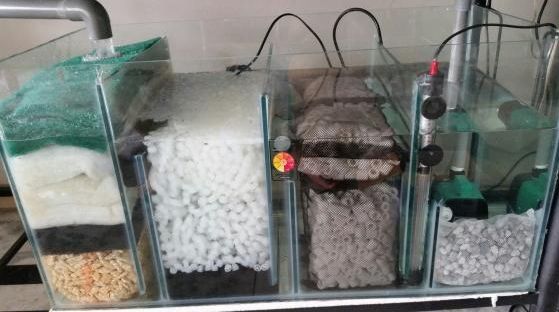
The people who are serious about the hobby and have large aquariums use a sump filter, typically located below the aquarium in the cabinet. Sumps have many advantages. Many come on social media and ask “Sump or canister for my new 150 gallon tank?”.
The advantages are:
- Sumps hold tons more biomedia (think crystal clear, clean, extremely healthy water). Crystal clear water requires 20 time the biofiltration capacity ammonia oxidation requires.
- You can do much more stocking with a sump, either a lot of smaller fish or some large fish (note two adult Oscars are the equal in bioload to sixty mbuna)
- If one uses a cheap polyester mat as a mechanical filter media it is much easier to clean in a sump, 5 minutes with sumps versus 45 minutes to clean a canister. If one does what I do, namely use NO mechanical filtration coupled with a K1 fluidized bed, there is no need to clean at all.
- With PROPER PLUMBING DESIGN sumps can be made leak and overflow proof. I have had many canisters spring leaks in all sorts of places.
- Sumps last forever with occasional pump replacements. My canisters have all failed in one to seven years of service (aside for the ones that failed out of the box).
- You can build a 40-gallon DIY sump for $150 while comparable canisters like the FX6 are over $300.
- You can hide the heater in the sump.
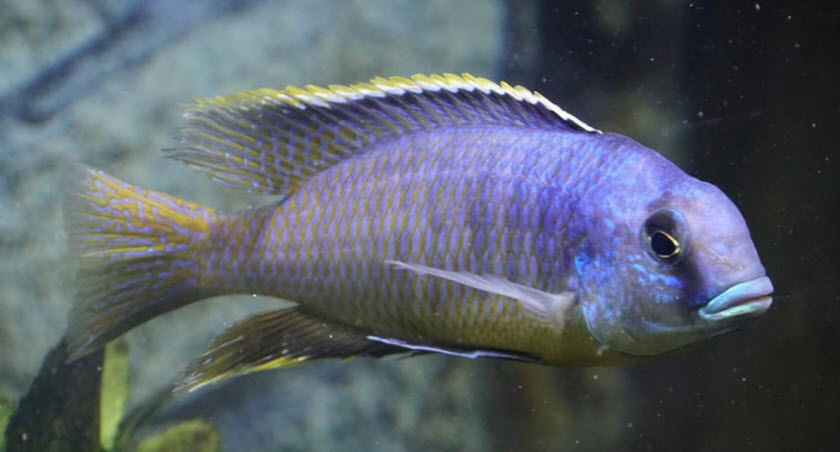
The downsides are:
- Sumps can be noisy, with lots of gurgling (there are ways to stop this). And air stone operated K1 fluidized beds are very noisy. Expensive canisters typically are quieter. Cheap canisters CAN be very loud.
- Sumps with mesh filter socks (“mechanical filtration”) can require weekly removal and cleaning of the socks outside the sump, typically in a sink with lots of pressurized water. This can be a real pain. I simply do not use mechanical filtration in my sumps.
- The design of the system needs about six different safety features to prevent overflows.
- Purchased sumps are very expensive and designed for saltwater tanks, so they need modifications for freshwater.
- Sump pumps need to be more powerful than regular aquarium pumps. So the pumps are expensive ($60 on up)
- Do it yourself sumps require some small amount of plumbing abilities while canisters are plug and run.
- If you use an improperly designed overflow in the tank, small fish can get into the sump.
For a tank over 75 gallons that will be reasonably well stocked, I always use a sump. Millions of dollars of research into commercial aquaculture water filtration has shown that K1 media fluidized bed sumps are two to ten times better on a cubic inch to cubic inch basis that any other type of filter. I like simple two chamber fluidized bed sumps myself. I use quiet wavemakers to move the K1 media.
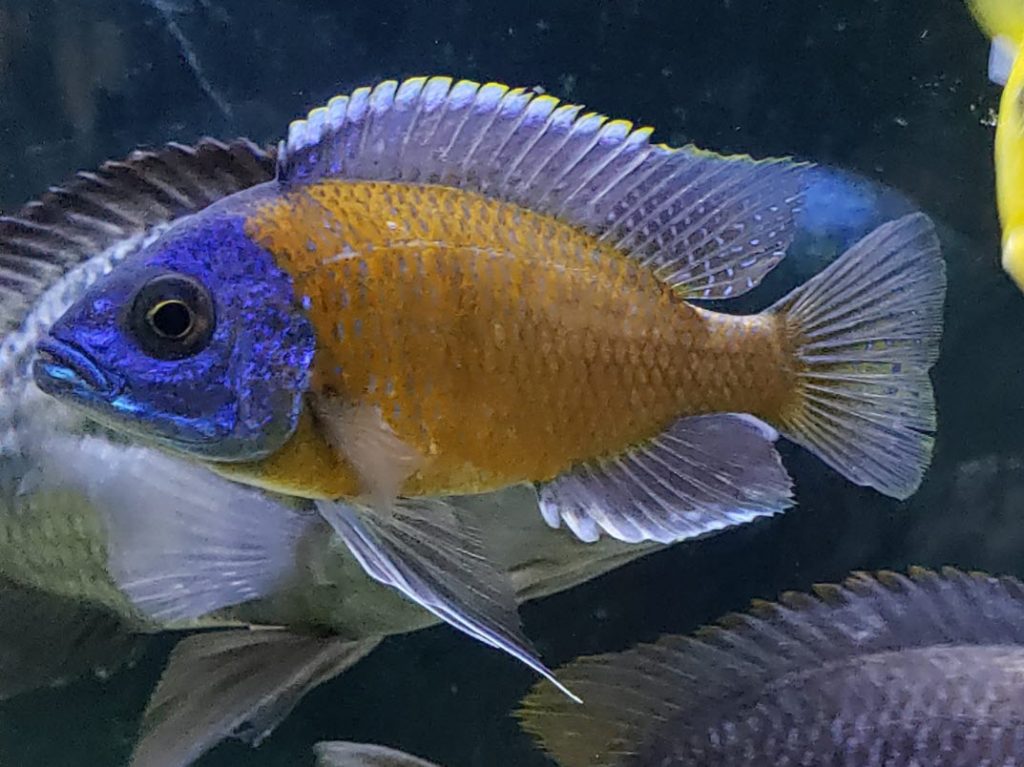
Many hundred million dollars of research in recirculating aquaculture systems (RAS) has clearly established that two or three chamber K1 Fluidized Bed Sumps are two to ten times better on a cubic inch per cubic inch basis than any other filtration system. One should use easily built, cheap, efficient fluidized beds with cheap K1 rip offs from China in any tank over 75 gallons. This will give you water which is crystal clear and well oxygenated, the “optimum” aquarium.
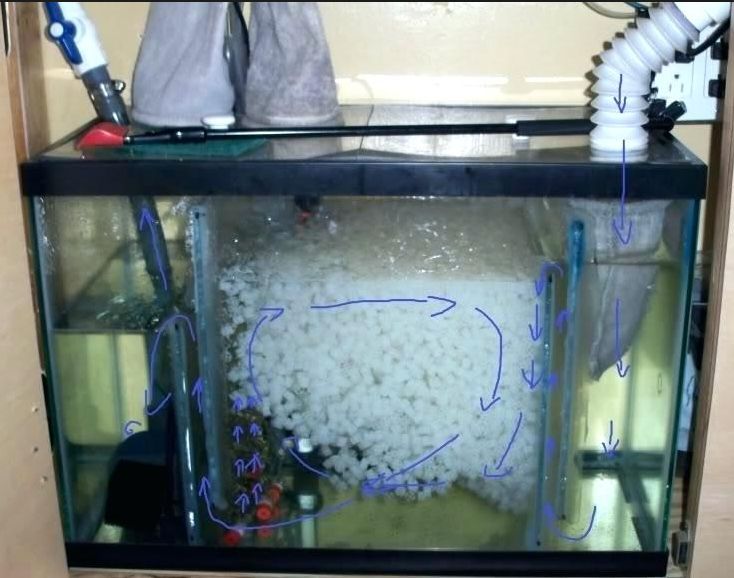
A fluidized bed sump is roughly two times more efficient than the best submerged static media sump. And a submerged static media sump is twice as efficient as the best wet/dry sump. And a wet/dry sump is about twice as efficient as a trickle filter. This means that on a cubic inch to cubic inch basis a fluidized bed sump is roughly eight times better than a trickle filter. A submerged static media sump is four times better than a trickle filter.
A Good Alternative
For those who are cowed by the complexity of a fluidized bed there is a design of sump called a “foam sump” that is very simple in design and in operation. The article about these types of sumps is:
8.6.7. Foam Sump
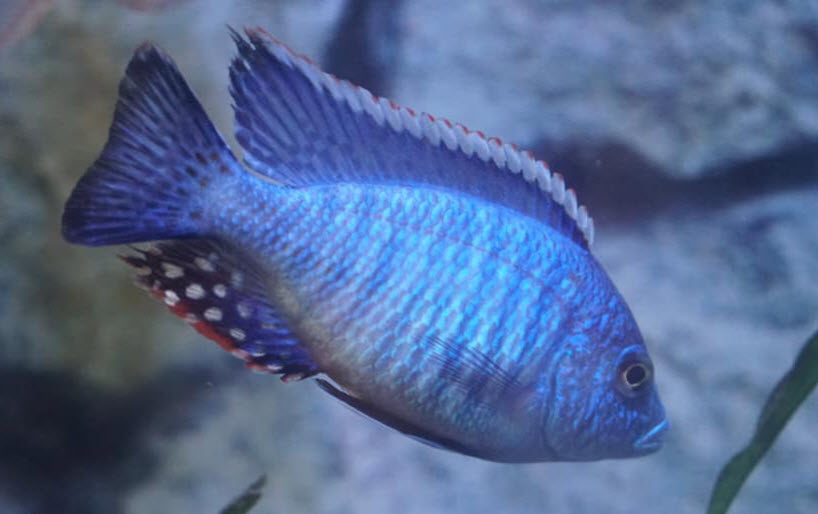
Costing Considerations
Looking at cost and the efficiency the best all around option is to buy a 40 gallon breeder tank from your LFS. Then simply add a baffle plate, plumbing, a pump and go (see “What I Do” below).
Or one can buy off Ebay a Fiji Cube Sump Kit Refugium Baffle Kit – 40 Gallon Breeder $119.99 + $9.99 Shipping. Anyone, even the DIY challenged, can follow the directions on this easy kit. Note you will have to buy a high pressure pump for any sump setup.
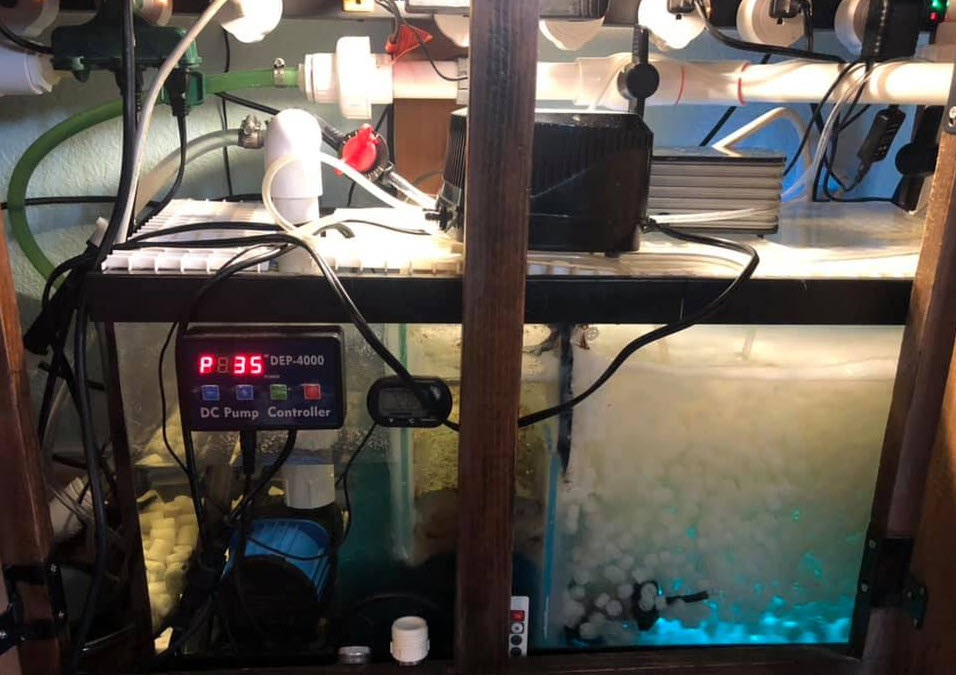
What I do
For any sump I generally use the largest sized aquarium I can fit into the cabinet or stand under the aquarium. I use only fluidized K1 sumps where the sump area with the K1 in it is filled with 60% by volume of water with K1 media.
I only have one partition in the sump and it is an acrylic sheet with many drilled holes in it so that all the water in the sump is at the same level. It is easy to cut acrylic sheets and drill them for partitions. They can be siliconed in place without worrying about appearances. I find they are very easy to make, even for someone as mechanically challenged as I am.
I don’t bother with mechanical filtration in my sumps. Mechanical filtration is simply not needed in most aquariums and construction of the sock partition is somewhat challenging. I find that filter socks plug up with debris in my heavily stocked tanks in as little as three days. So I just run the flow straight into the K1 fluidized bed and let the agitating K1 break up the feces and break them down.

I like to run the inlet pipe into the sump with an exit below the water level in the sump. This minimizes the “gurgling” heard with many sumps.
I make all my sumps very simple two chamber affairs with a fluidized bed K1 chamber inlet side and a pump chamber. The two chambers are always connected via holes in acrylic panels in such a way as both chambers have the same water level at all times. This means I only have one simple holed acrylic partition to make to build the sump.
The only expenditure of any size are for the aquarium and for the pump. I collect old, crappy, cheap aquariums off Craig’s List to use as sumps. I create the current for the K1 media agitation using six wavemaker bladed pumps rather than air stones. Air stones are too noisy for me.
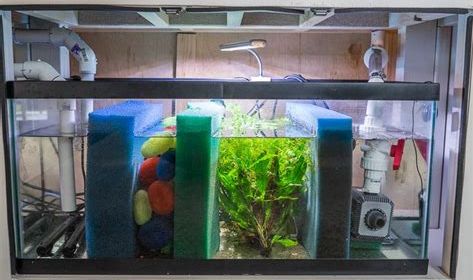
Cautions
Some hobbyists like to use sponge pre-filters on the intake of the sump, just squeezing them out on a regular basis. This is a very risky practice. If one forgets to squeeze the pre-filter out, the pump can drain the sump and flood the aquarium. Do not use pre-filters on the overflow intakes of sumps.
And always fill the sump with as much media as you can cram in. I always wonder about folks who have beautiful large sumps and they don’t put much media in them. Even Joey Mullin (The very knowledgeable and immensely likeable “King of DYI” Aquarium YouTube channel) has one large sump where all he has in it is a single Cermedia block, which our testing found to be a totally ineffective media.
The sump below will NOT be a good biofilter. The ceramic rings are about the worst media there is. And the media only fills maybe 10% of the volume it could fill. So this sump probably will remove ammonia but probably will not give healthy, crystal clear water.

The chapters below cover these filters in detail:
8.6.1. Sumps in Depth
8.6.2. Static Submerged Media Sumps
8.6.3. Trickle Filters
8.6.4. Wet-dry Sumps
8.6.5 Fluidized Bed Sumps
8.6.6. Do-it-yourself Sump
8.6.7. Foam Sump
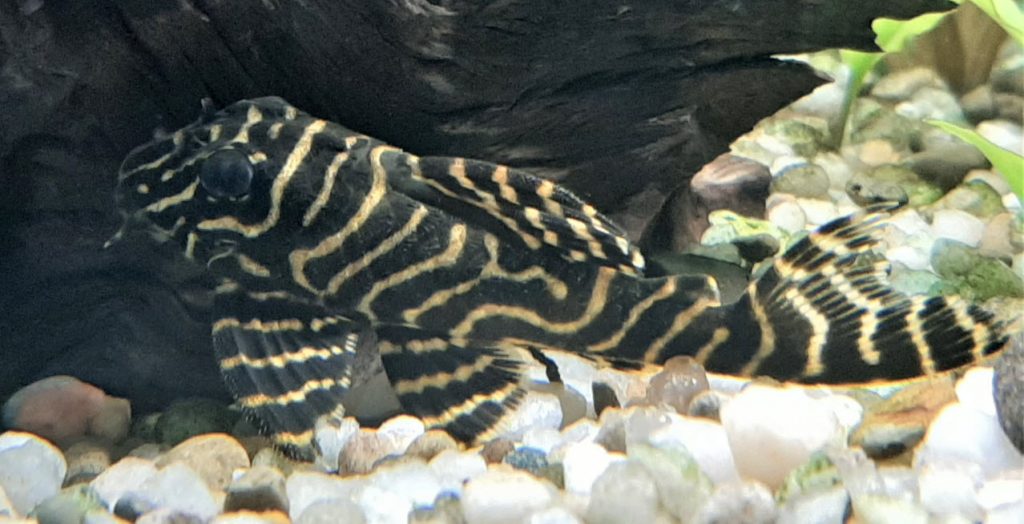
The selection of a pump for a sump is actually a pretty tricky process. For guidance this link will help:
14.6 Pumps
Note that many beginners are concerned about how to flow the water to a sump. The common refrain is “my aquarium isn’t drilled, how does the water get to the sump?” Click on this link to get some ideas:
14.7. Overflow Devices
And the plumbing for a sump is very important, including the piping sizing. This is covered in this link:
14.5 Plumbing and Piping

.
Return to Filters Menu
.
Aquarium Science Website
The chapters shown below or on the right side in maroon lead to close to 400 articles on all aspects of keeping a freshwater aquarium. These articles have NO links to profit making sites and are thus unbiased in their recommendations, unlike all the for-profit sites you will find with Google. Bookmark and browse!
.

Dave says
In reply to Brad K ……. The helix won’t be tossed around that much in a canister filter. So the sponge is better IF IT IS VERY CAREFULLY CUT TO ELIMINATE FLOW BY.
Brad - UK says
Hi Dave,
Here is a musing question for you, and one about HEL-X 13 type media.
The Oase 250 canister filter has several trays, one of which is filled with HEL-X 13 media within a mesh bag. (HEL-X 13, I understand, is comparable to K1).
1. If the HEL-X 13 is not placed in the mesh bag but allowed to flow freely in the tray, does that potentially increase its effectiveness as it has more mobility due to the flow tossing it around more?
2. I am struggling to measure how effective HEL-X 13 is in one tray (which equates to 800ml or 0.22 US Gallons of HEL-X 13). I can’t work out whether a tray of 0.22 USG is better/same/worse than a tray of 20PPI or 30PPI sponge. The sponge has been easier to calculate!
Thanks for your help as always.
Thanks,
Brad